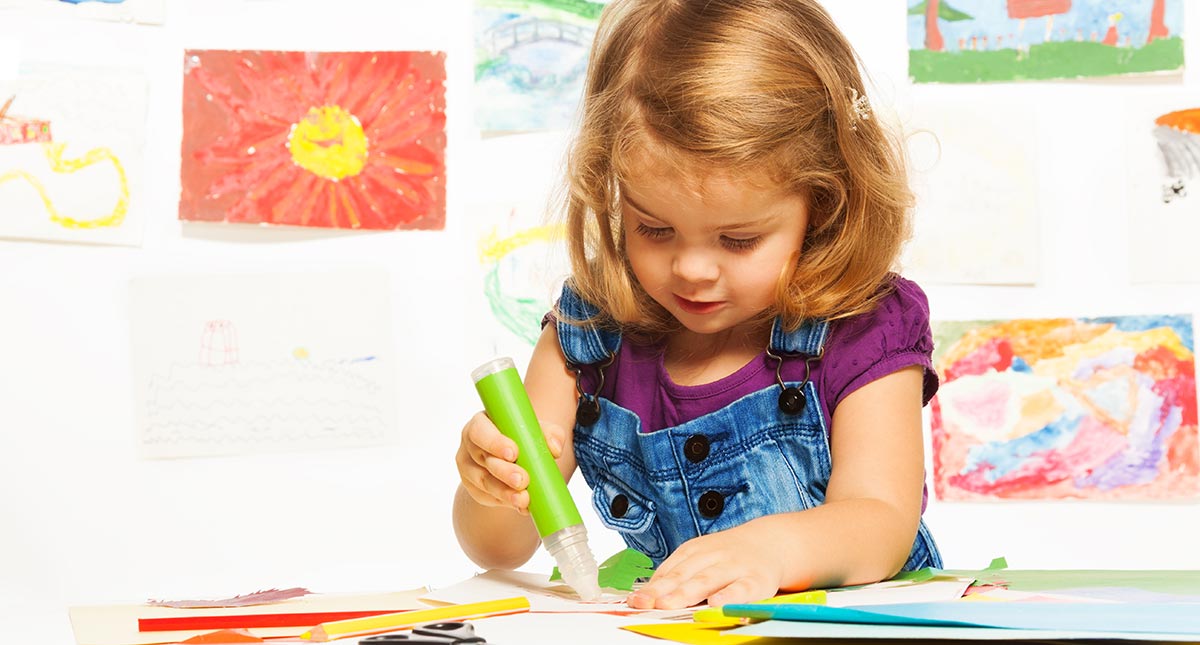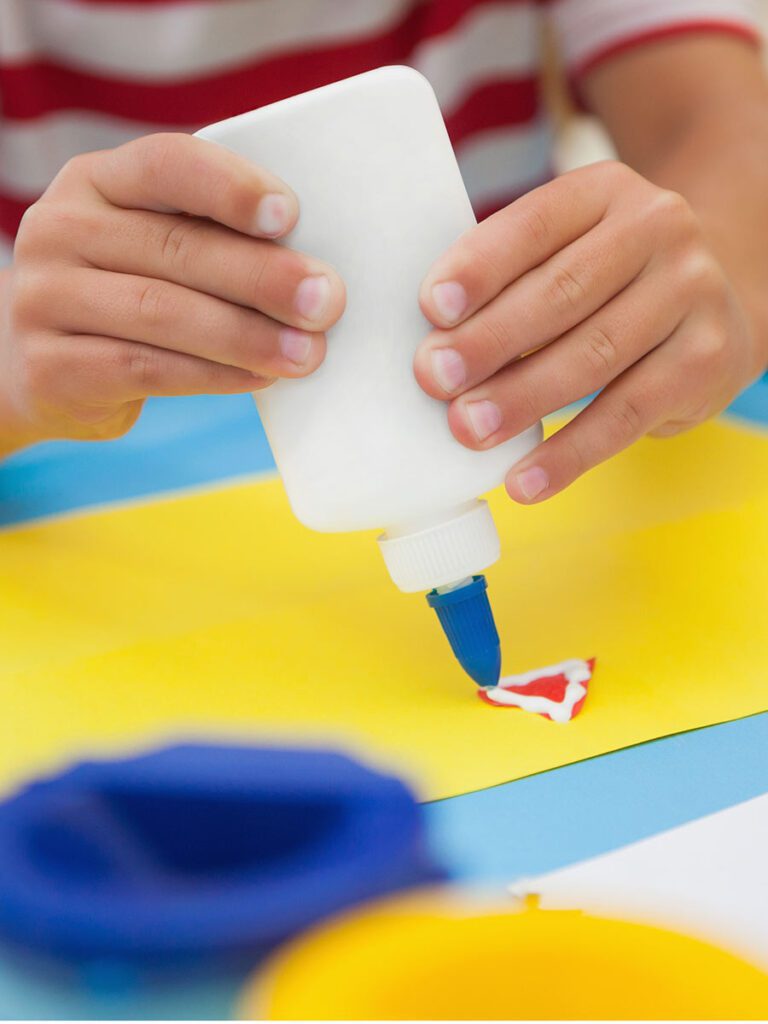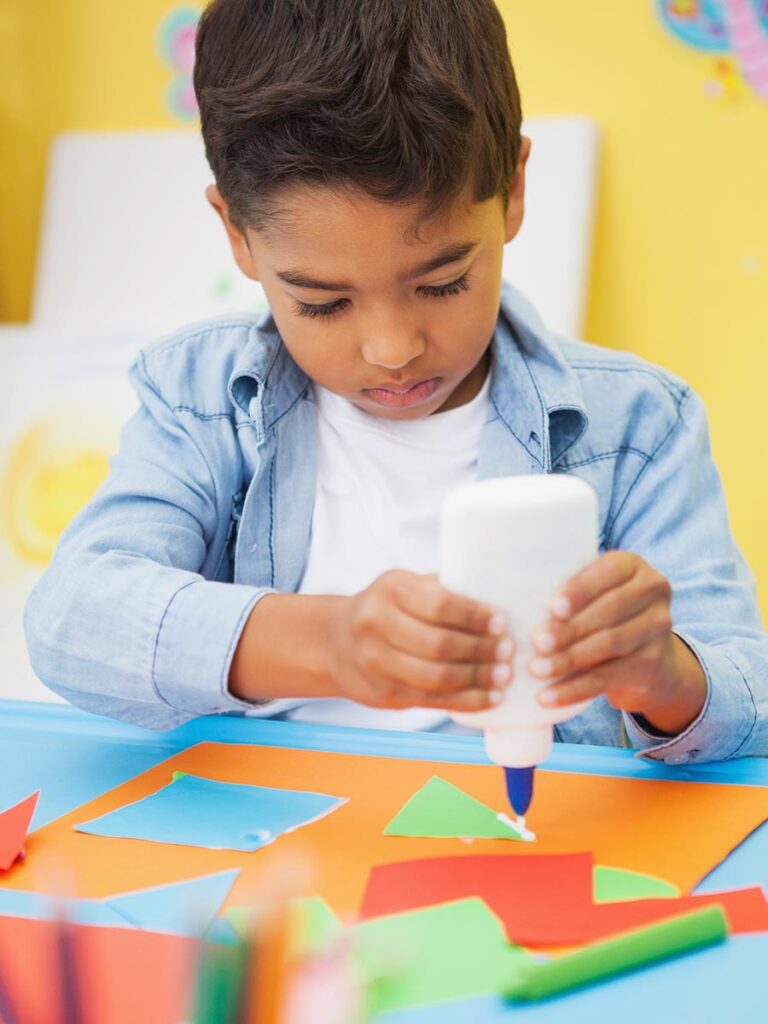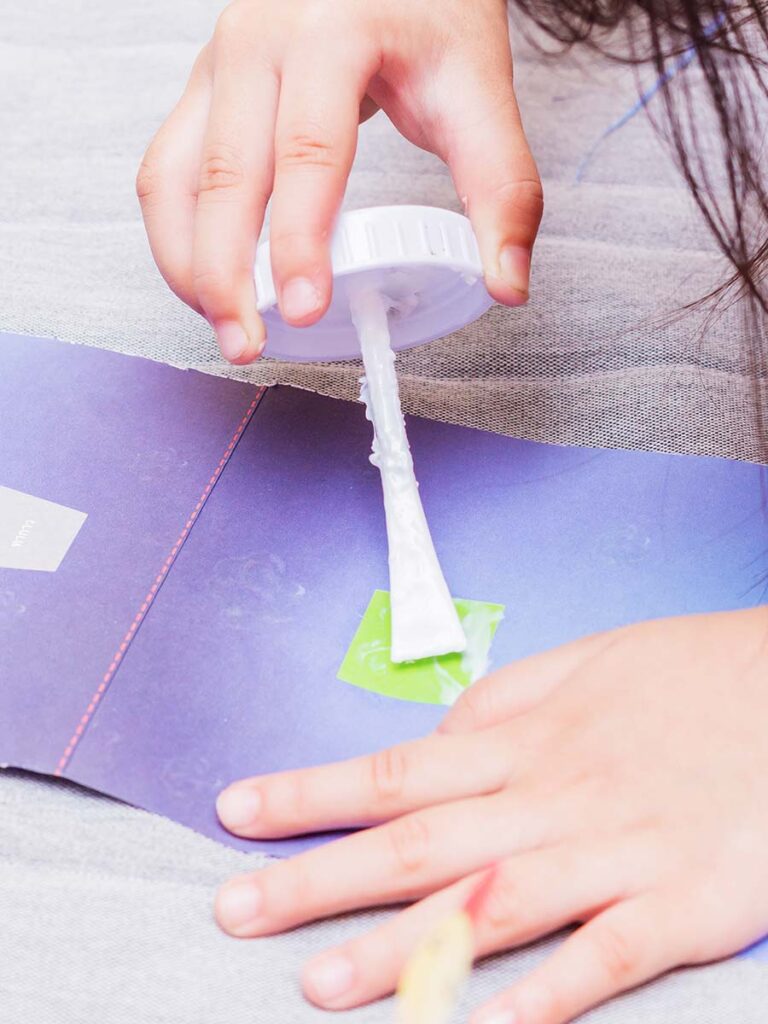I Can Glue, How About You?
Introduction
Whether it's a glue stick or a bottle of glue, this school staple will surely be on your child's kindergarten supply list. Gluing is yet another fine-motor skill that will affect the quality of your child's work—as well as the amount of time that it will take to finish a kindergarten project. Let's practice this skill before your child walks through that kindergarten classroom door!

Gather Materials
- A glue stick or a bottle of glue
- Construction paper ripped into small pieces
- A large piece of paper or a paper plate to glue the ripped construction paper onto
Note: Small parts pose a choking hazard and are not appropriate for children age five or under. Be sure to choose lesson materials that you feel are safe for your child and that you are comfortable letting your child use.
Activity
Learning to use school supplies is an ongoing process that takes a lot of practice. Start your toddler or preschooler out with a glue stick. I prefer Elmer's purple glue sticks because young children can see where they have applied the glue. The purple color will disappear as the glue dries.

When I first introduce glue sticks to young learners, I use animals as a reference. I teach my preschoolers to scamper quickly and quietly—like a mouse—across the paper. We don't want any big, heavy elephants stomping slowly across our paper! That darn elephant. He leaves us with smashed glue sticks and purple smudges and uses up our glue sticks very quickly.
Show your child how to turn the little wheel at the bottom of the glue stick to expose just enough of the stick to apply glue to the paper. If too much of the stick is exposed, the "elephant" will crush it and the glue stick will have to be thrown away. Remind your child to replace the cap on the glue stick when the gluing is done.
Now instruct your child to rip half a sheet of construction paper into small pieces. Ripping paper is another great activity that will strengthen little fingers, hands and wrists—and make holding a pencil and cutting with scissors easier in the days to come. Use construction paper in different colors to fuel your child's creativity.
Give your child time to work on the gluing activity. Demonstrate how to put the glue on the construction paper or the paper plate—and not on the object to be glued. This is a key piece of the gluing puzzle! Put some glue on a few pieces of paper and then step back to let your child take it from there. This is your child's time to practice with the glue and put the pieces of paper where he or she wants them to go.
Once children have the glue stick under control, I like to add elements such as googly eyes or paper strips with accordion folds.
Bottled glue is a bit trickier for the under-five set. Young children tend to squeeze the glue bottle too hard or not hard enough. Many twist off the entire cap instead of turning only the orange tip that dispenses the glue. The list of potential mishaps is a long one!
Show your child how to open the bottle by twisting only the orange part of the cap until the white tip disappears. Then show your child how to turn the glue bottle over and count to three before squeezing.
Next, demonstrate how to squeeze the bottle gently to make one small dot on the paper and then move the bottle to another spot on the paper. Squeeze, spot, squeeze, spot, squeeze, spot. Three times.
This is a good time to introduce the song, "A Little Dot of Glue."
Now, instruct your child to press the torn paper pieces onto the dots of glue to create a design. When the gluing is done, demonstrate how to close the glue bottle by twisting the orange cap in the other direction until the white tip reappears.
Keep adding materials to the glue pile to pique your child's interest and practice, practice, practice. It may take some time, but learning how to apply glue without creating large, wet puddles on a treasured art project will bring your child confidence and joy.
Gluing tends to be a calm, quiet, focused activity. What's not to love about that?


